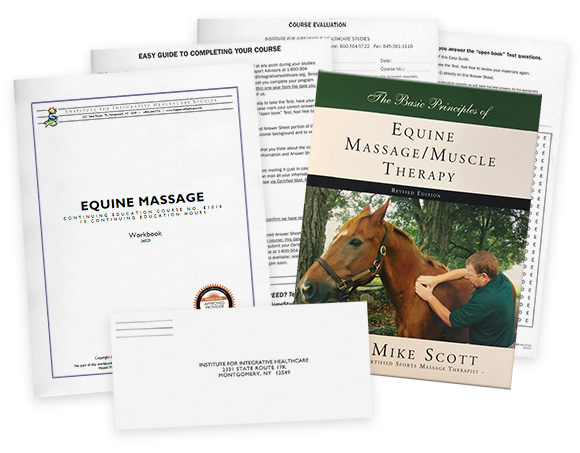
This course presents equine anatomy and physiology, assessment strategies, safety issues for both the horse and the therapist, the theory behind appropriate massage techniques, a discussion of how the author applies techniques in various situations, how he uses stretches to benefit the horse, and how to he uses attention when touching horses.
The easy to use format of the course text provides margins on each page for note taking, at a glance tables in the applications and anatomy sections and clearly understood photos. A guide for the professional as well as a starting point for the layperson or aspiring therapist, the methods described in the course text are safe for both the horse and owner.
In this course, you will learn:
Note: Check with your state massage board regarding animal massage regulations and scope of practice in your state.
Tracyanne Hunter, LMT
4/12/2024
Gail Fiebig, LMT, BCTMB
2/16/2024
Laura Spitulnik, CMT
2/15/2024
Mandy Zarcone, LMT
11/28/2023
Schonna M. Genchi, LMT, BCTMB
9/30/2023

Sharon Burch holds a Masters Degree in Nursing and has been practicing as a nurse since 1974. She is currently a Registered Nurse in the state of Arkansas. Additionally, Ms. Burch studied under many of today's leaders in massage therapy and bodywork during the 1980s, became Nationally Certified through the NCBTMB in 1993 and holds a professional membership with the AMTA.
As founder of Health Positive!, Ms. Burch has created over 60 home study nursing and massage continuing education programs, performed over 65 public, live educational presentations, has written two published books, served as a member on the NCBTMB Continuing Education committee and was a founding member of the National Association of Nurse Massage Therapists.
Sharon is an instructor on many of the Institute's programs and has authored and co-authored various ethics courses and additional titles such as Touch for the Seriously Ill, Stress Reduction Through Bodywork, Staying Well – Naturally, Cardiopulmonary Health and Illness, Chronic Pain Management, Marketing Massage in Four Easy Steps, Preventing Medical Errors, HIV Update for Massage Therapists and Bodyworkers, Understanding HIV, Massage for Edema and more.


Take our free online course: Ethics Refresher
We will not rent/sell your email to anyone.
You'll also receive our newsletter and special offers.
Thank you! An email will be sent to the address provided with instructions on how to enroll in this 1 CE hour course - FREE!
If you do not see our email within a few minutes of signing up, please check your Spam/Junk folders it may have been delivered there instead of your inbox.
If, by chance, you still have not received it within 5 minutes, please call us at 1-800-364-5722, Monday-Friday, between 9am-12:30pm and 1:30pm-5pm EST for assistance.